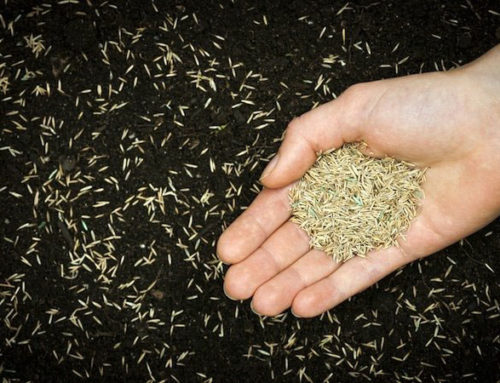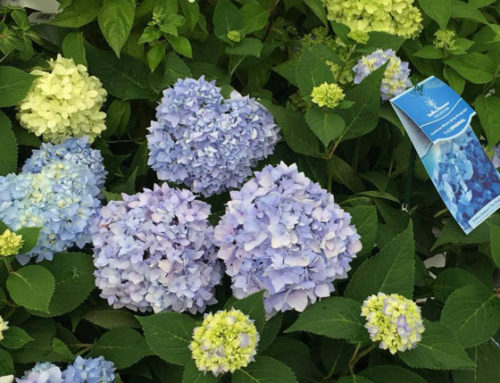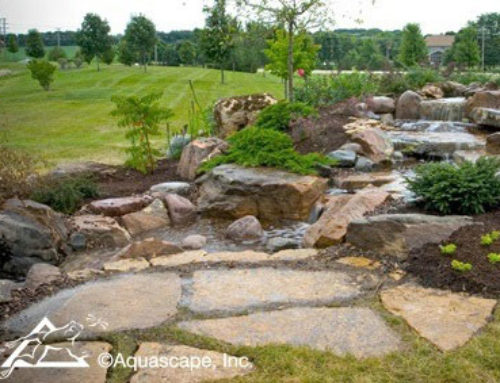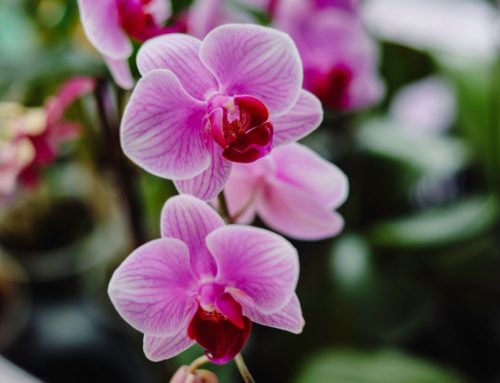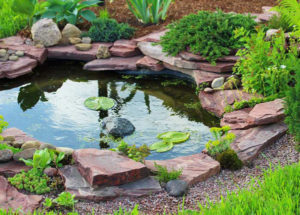
No matter how big your backyard pond or water garden may be, there are some basic maintenance tasks during the summer that will help keep your pond looking marvelous.
Aquatic Plants & Fish
If you have a typical pond, then you probably have a number of aquatic plants and fish. But did you know that bacteria plays a vital role in your pond too? Indeed, a healthy pond needs good bacteria to breakdown the nitrites produced by fish excrement and turns it into nitrates that are used by plants as fertilizer. Obviously, having a balance is key, so if you don’t have enough natural bacteria, you can purchase Aquascape bacteria right here at Johnsons.
For your aquatic plants its important to keep them maintained just as you would for other plants in you yard. When your flowering plants bloom, you will need to keep an eye out for “dead-heads” or yellow foliage and clip them back so the dead foliage does not fall into the pond. Additionally, take some time to thin out more aggressive plants so they don’t start crowding other plants or crowding out open water space. Remember, balance is the key, especially when it comes to your pond ecosystem. If you have Water Lilly planted, you want enough free surface water area for them to spread out. Water Lilly is an excellent cover for fish and also provides shade to keep the water cooler during hot summer days.
The most common fish for backyard ponds are Koi & Goldfish, which are very hardy and can withstand cold & warm environments. Even though these fish are hardy, they still need care. Feeding should only take place in warmer months and only the minimum that they can eat in about 5 minutes. It’s important not to feed them in cold months or winter, because their digestion slows in colder temps (water temp below 50 degrees) and it could actually kill them. Also important, if you are using city water to refill or replace after cleaning, your water most likely contains chlorination. To be safe, you can buy Pond Detoxifier to nullify the chlorination and other chemicals / heavy metals that can harm fish.
Pond Cleaning
Here in the Northwest, ponds are very popular with frogs and other essential aquatic life like dragonflies. The frogs come out in early spring to lay their eggs in any standing water. The noise from their mating calls can be very loud and disturbing especially at night, but trust us, it’s worth it. If you have a large population of tadpoles in your pond, they will literally clean all algae in your pond in a few months. By mid-Summer, the tadpoles are all but gone, growing their legs and off they hop for the next generation, but they will leave you with a good head start on cleaning.
You’ll want to start with removal of any dead foliage and fallen leaves, which will help reduce nutrient levels that cause algae blooms. Next, here’s a handy step-by-step list from our friends at Aquascape Pond Supplies:
- Start Draining the Pond – An inexpensive pump or a sump pump is sufficient. Be sure you use some of the pond water to fill a container with pond water for the fish.
- Disconnect the Circulation System – This will allow the water in the plumbing to drain out.
- Catch the Fish – Drain the pond down to the lowest shelf in order to catch fish easily and safely.
- Remove Debris – Once the pond is drained, remove the large debris like leaves and twigs.
- Wash the Pond – A 1,500 psi pressure washer or a high-pressure nozzle on a garden hose is recommended for pond cleaning.
- Rinse the Pond – Rinse the pond from top to bottom with a garden hose without the high-pressure nozzle. This will help wash any remaining pond debris from under the rocks. As the dirty water accumulates on the bottom, continuing to pump it out. NOTE: It’s OK to leave some string algae in your pond, because this is fish food AND it uses up nitrites.
- Clean the Filters – Spray the filtration media until relatively clean and rinse down the inside of the filter units.
- Refill the Pond – Pull the clean-out pump out and begin re-filling the pond.
- De-chlorinate the Water – Most city water contains chlorine and chloramines and should be treated with a de-chlorinator before fish are introduced.
- Acclimate the Fish – A spring clean-out can be stressful to fish, so proper acclimation is suggested to decrease stress and avoid future health problems. In order to properly acclimate your fish, you’ll want to slowly introduce it to the water by floating them in the pond fish and adding pond water little by little before letting them in.
Pond Aeration
With the warmer temperature of Summer, now is as good a time as any to work in your pond to maximize the aeration the water needs to support the aquatic life in your pond. Warmer water holds less oxygen and if you have fish, now is their most active time. Good aeration can come from a water fall, but if you don’t have one, you can utilize fountains or an aeration pump. Aeration pumps can do a very good job of increasing the gas exchange of oxygen in the water.

